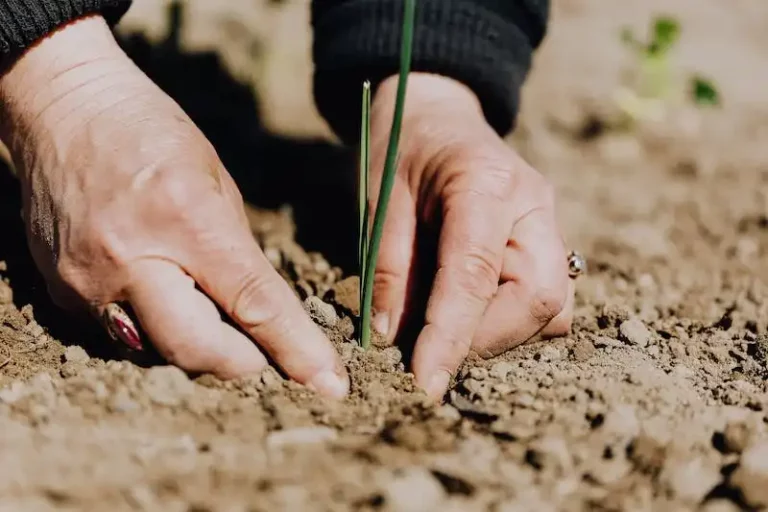Spittlebugs are a type of insect that many gardeners are familiar with. These small insects, also known as froghoppers, get their name from the foamy spittle mass they produce. The foamy froth, which is essentially a protective coating, is created by the nymphs of the spittlebug. These wingless young bugs use the spittle mass as a way to hide from predators and stay hydrated. Spittlebugs are most active from late spring to early fall, with adults emerging in September.
While spittlebugs may not be harmful to humans, they can cause damage to lawns and gardens. The nymphs and adults feed on plant sap by inserting their piercing mouthparts into the stems and leaves. This can weaken the plants and make them more susceptible to disease. In addition, the foamy spittle masses can be unsightly and decrease the aesthetic appeal of the garden.
If you want to get rid of spittlebugs in an organic way, there are several steps you can follow. First, it’s important to monitor your plants for the presence of spittle masses. These can easily be spotted as white or light green bubbles of froth attached to the stems. If you find spittlebugs, you can gently dislodge the spittle mass with a jet of water. This will expose the nymphs and make them more vulnerable to predators.
If you have a large infestation of spittlebugs, it’s best to manually remove them by hand. Wear gloves to protect your hands and carefully pick off the insects. Another option is to use insecticidal soap, which can be sprayed directly onto the spittle masses to kill the insects. However, it’s important to note that insecticidal soap can also harm beneficial insects, so use it sparingly and only when absolutely necessary.
In order to prevent spittlebug infestations in the future, it’s a good idea to make your garden less attractive to these pests. Spittlebugs prefer sunny areas, so planting shade-loving plants or providing shade with a trellis can help deter them. Additionally, keeping your plants healthy and well-watered can make them less susceptible to spittlebug damage.
By following these organic control methods, you can effectively eliminate spittlebugs from your garden without resorting to harmful chemicals. Remember to be proactive in monitoring for spittle masses and take action as soon as possible to prevent the insects from causing further damage.
Managing the Twolined Spittlebug in the Home Landscape Entomology Insect Notes
The two-lined spittlebug (Philaenus spumarius) is an insect that can be found in many home landscapes, including gardens and turfgrass areas. It is a small insect, about 1/4 inch long, with wings that are mottled and brown in color. While they may not be very noticeable on their own, they can be identified by the foamy spittlemass that they create to protect themselves.
Managing spittlebugs in the home landscape starts with monitoring your plants and turfgrasses. Begin by looking for spittlemasses on plants, especially in the early spring. If you have noticed any, it is important to take action to eliminate them as soon as possible.
There are several organic methods for managing spittlebugs, including dislodging the nymphs from the spittlemass using a jet of water. This can be done by using a hose with a high-pressure nozzle to spray the spittlebugs off of the plants. Another method is to prune away any debris and weeds around the plants, as this can create a favorable environment for spittlebugs.
It is also important to make sure that your plants and turfgrasses are well-nourished and healthy, as weakened plants are more susceptible to spittlebug infestations. This can be achieved by providing the proper amount of water and nutrients, as well as following good cultural practices such as regular mowing and fertilizing.
If you have a large infestation of spittlebugs and the above methods are not effective, you may need to consider using insecticidal soap or horticultural oil, both of which are listed as organic controls for spittlebugs. However, it is always best to try to eliminate spittlebugs using non-chemical methods first.
In summary, managing the twolined spittlebug in the home landscape can be done organically by monitoring your plants, eliminating spittlemasses, and creating a healthy environment for your plants and turfgrasses. By following these steps, you can effectively control spittlebug populations and maintain a beautiful and pest-free landscape.
Biology
Spittlebugs, also known as spittle insects or froghoppers, are small insects that belong to the family Cercopidae. They are named after the frothy spittle masses that they produce as nymphs for protection. The most common species of spittlebug is the twolined spittlebug (Prosapia bicincta).
Spittlebugs go through several stages of development, including egg, nymph, and adult. The adults are about 6-8 mm in length and have two pairs of wings that fold flat on their back. They resemble tiny frogs and are commonly mistaken for them due to their appearance. The nymphs, on the other hand, are wingless and undergo five instars before reaching adulthood.
Spittlebugs are primarily found in grasses and plants, living and feeding on the sap. They can be commonly found in gardens, landscapes, and turfgrass areas. They overwinter as eggs in plant debris and emerge as nymphs in the spring, typically around April or May, depending on the region.
The nymphs produce a frothy spittle mass around their bodies for protection against predators and to regulate temperature and moisture levels. This froth is made from a mixture of saliva and air bubbles and can be found on the stems and leaves of plants. The spittle mass not only serves as a physical barrier but also hides the nymphs from predators, such as birds and other insects.
Managing spittlebugs in an organic way involves monitoring their presence and taking steps to eliminate them without the use of chemical insecticides. Here are some recommended steps:
| 1. | Inspect plants for the presence of spittle masses, especially in sunny areas. |
| 2. | Use a strong stream of water to dislodge the nymphs from the plant leaves and stems. |
| 3. | Remove any debris or plant material that may provide overwintering sites for spittlebug eggs. |
| 4. | Encourage natural predators, such as ladybugs and lacewings, to control spittlebug populations. |
| 5. | Apply organic insecticidal soap or neem oil according to the recommended guidelines to kill the nymphs and adults. |
| 6. | Rotate the crops in your garden to disrupt spittlebug feeding and breeding patterns. |
By following these organic control methods, you can effectively manage spittlebugs and prevent damage to your plants and gardens.
Source: https://entomology.ca.uky.edu/files/ef409.pdf
Damage
Damage caused by spittlebugs is generally not considered necessary. These insects, including the Philaenus spumarius, use their long legs to create bubbles of foam, or spittle, around their bodies for protection. The foam acts as a shield against predators, as well as provides a moist environment for the spittlebugs to feed and develop.
While spittlebugs may seem harmless, they can cause damage to plants, especially turfgrass. The nymphs, or young spittlebugs, begin to feed on plants in the spring, weakening them over time. As the nymphs feed, they create foamy bubbles on the plant stems and leaves, which can be a nuisance for gardeners and homeowners.
In state of overwinter, the spittlebugs lay eggs on plants, particularly grasses. These eggs will hatch in the spring, and new generations of spittlebugs will make their home in the same turfgrass. This can result in an ongoing cycle of damage and infestation.
In order to identify and manage these pests, it is important to learn how to recognize spittlebug infestations. The adults are small, mottled insects that resemble leafhoppers. They have a distinctive shape with prominent eyes that look like two black dots. While they are active throughout the year, they are most commonly noticed in early summer.
To control spittlebugs in gardens, lawns, and other outdoor areas, it is best to avoid chemical solutions. There are many resources available online that provide information about homemade, organic methods to eliminate these insects. One common recipe involves spraying plants with a mixture of water and natural soap solution, which can be effective in managing spittlebug populations.
Remember, managing spittlebugs may vary depending on the state and region, as well as the specific type of spittlebug. It is best to learn about the resources available in your area to ensure the most effective control measures. By learning to identify and manage spittlebugs, you can protect your plants and maintain a healthy garden or lawn.

